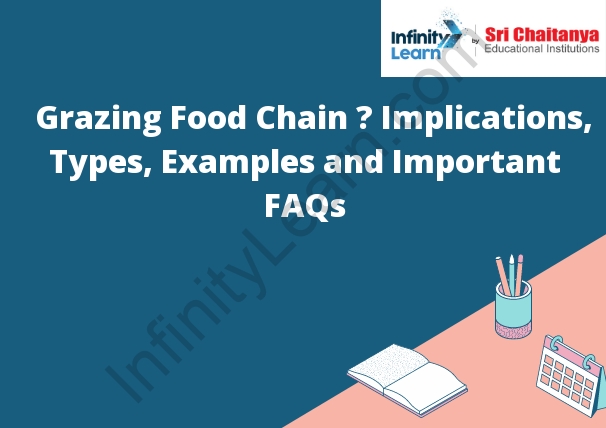Table of Contents
Food Chain
A food chain is a linear sequence of links in a food web, starting with a producer and ending with a consumer. Producers are organisms that produce their food from inorganic substances, such as plants that make their food from sunlight, water, and carbon dioxide. Detrital consumers are animals that feed on dead organic matter, such as earthworms that eat decaying leaves on the soil surface.
An example of a detrital food chain is a grassland ecosystem. The producer in a grassland ecosystem is the grass. The primary consumers are the grasshoppers and the rabbits. The secondary consumers are the hawks and the foxes. The tertiary consumers are the eagles.

Implications of Grazing Food Chain
The grazing food chain is a model of how energy and nutrients flow through an ecosystem. The model starts with the sun, which provides energy to the plants in the ecosystem. The plants use the energy to produce glucose, which is the primary food source for the animals in the ecosystem. The animals eat the plants, and the energy from the plants is transferred to the animals. The animals then transfer the energy to the next level in the food chain by eating other animals. This process continues until the energy is finally transferred to the top of the food chain, where it is lost as heat.
Types of Grazing Food Chain
There are three types of grazing food chains:
The first type of grazing food chain is where the primary consumer eats the producer. The producer is a plant that has eaten by an animal that is larger than the producer. The animal that eats the producer called a herbivore. The second type of grazing food chain is where the primary consumer eats the primary producer. The primary producer is a plant that has eaten by an animal that is larger than the producer. The animal that eats the producer is called a carnivore. The third type of grazing food chain is where the primary consumer eats the primary producer. The primary producer is a plant that has been eaten by an animal that is larger than the producer. The animal that eats the producer is called an omnivore.
Grazing vs. Detrital Food Webs
Grazing food webs are those in which the producers are eaten by herbivores, in turn, eaten by carnivores. The carnivores are, in turn, eaten by other carnivores, and so on. Detrital food webs are those in which the producers are not eaten by herbivores but are eaten by detritivores. Detritivores are organisms that eat dead plants and animal material.
Energy Transfer Efficiency Limits
A number of factors limit the efficiency at which energy can be transferred between two objects. One major limitation is the difference in temperature between the two objects. The hotter object will always transfer energy to the colder object, but the efficiency of this process decreases as the temperature difference between the two objects decreases. In addition, there is always some loss of energy in the form of heat when energy transferred between objects. This loss increases as the temperature difference between the objects decreases. Finally, the objects must be in direct contact for energy to transferred, and this contact is not always possible or practical.
Examples of Grazing Food Chain
A grazing food chain is a type of food chain in which the chain members are primarily herbivores that eat plants. The plants eaten by the herbivores, which eaten by other herbivores, and so on. The members of a grazing food chain usually found in close proximity to one another, and the chain usually has a very short length.
Some examples of grazing food chains include the grassland food chain, the forest food chain, and the tundra food chain. The grassland food chain made up of grasses, rabbits, and hawks. The forest food chain made up of trees, deer, and wolves. The tundra food chain made up of mosses, caribou, and wolves.
Fun Facts About Grazing Food Chain
A grazing food chain is a food chain in which the primary consumers are herbivores that eat plants primarily. The plants eaten by small animals, which larger animals eat, and up the food chain.
Grazing food chains are important in many ecosystems, including grasslands, forests, and wetlands. They are responsible for transferring energy and nutrients from the plants to the animals.
Some of the benefits of grazing food chains include:
- They help to recycle nutrients, which helps to maintain the health of the ecosystem.
- help control plant populations, which can help prevent the overgrowth of plants.
- They help create a diverse ecosystem with various species of plants and animals.
- are an important source of food for many animals.








